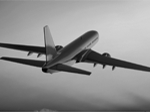Basics, Cargo Terminals, CARE, Ground Handlers
IATA ULD Regulations 2nd Edition Published
January 2014 sees the publication of the second edition of the IATA ULD Regulations. One might well ask, coming just one year after the first edition, why is it necessary for a new publication? ULD can’t be changing that much.
Not only is that not correct but there are significant changes that the industry needs to be aware of. Also from feedback on the first edition, it was found that some enhancements could be made to make this a more useful reference document. The purpose of this article is to provide our readers with a summary of the changes.
First of all, the IATA ULD Regulations are now available in printed format or CD Rom. This gives users the flexibility, found with many other IATA publications, of having a choice between hard copy and CD. In the longer term, the adoption of an electronic format may open doors for a more interactive publication, but that’s for the future.
Below is a summary of the main changes to be found, in no particular order of importance, as the entire contents are important:
- Fire Containment Covers (FCC) are fully covered, with the inclusion of the technical specification (based on the SAE standard) in Section 5, operating procedures in Section 6 and also handling guidance in Section 9.
- Coverage of transport of special cargo and in particular vehicles has been significantly enhanced under Section 6.
- The lengthy charts in Section 4 (SS 40/1) have been re-written, removing a lot of inaccurate, outdated and irrelevant material and replacing it with more user friendly references to different types of ULD’s and the applicable data including compatible aircraft types.
- The wording used under “Other Parties Responsibilities” in Section 1.5 has been slightly revised, making it clear that all parties handling ULD’s have a responsibility to follow all the requirements of Section 9 – Handling, not just the storage requirements as in Edition 1.
- The format and usage instructions for UCR and SCM messages are now included in Section 8, this material was previously only found in the ULD Control Manual which is no longer published.
- A disclaimer is added in the instruction making it clear that in the event of the unauthorized/incorrect use by any party of an airline or other ULD owners’ equipment, this unauthorized/incorrect use by any party shall not cause the airline or ULD owner to be liable for breach of the regulations.
- An alphabetical index is added.
There are also a number of other minor and editorial changes.
It is worthwhile to reflect as this 2nd edition becomes available just how far things have developed in the past 4 years since IATA made the commitment at the annual WCS meeting in March 2010 in Vancouver to recognize the importance of ULD to the air cargo industry. At that time it would have been hard to imagine just how much could be achieved in 4 short years.
It is also valuable to recognize that with the existence of the IATA ULD Regulations, many of the other industry “building blocks” are taking notice and cross referencing ULDR’s. We now see new or enhanced references to the ULDR’s in IOSA, ISAGO and TACT publications and all new training material , written around the ULDR are close to finalization. This is a process that once started will continue to progress, driving home the importance of carrying out ULD operations in a compliant and safe manner.
Looking ahead to 2014 and beyond there is plenty of activity around ULD. The year kicks off with a special meeting in IATA headquarters Geneva in early February with representatives from all aspects of the industry including aviation authorities. We can expect a number of conclusions from such a meeting which will drive changes for the 3rd Edition of the ULDR. Within this year, or early next year we can expect to see the establishment of new standards for Fire Resistant Containers, and we have for sure not seen the end of the discussions about the restraint of heavy cargo, which is an increasingly complex activity these days with a bewildering array of items being shipped by air.
ULD CARE encourages all members and readers to purchase the 2nd edition of the IATA ULD Regulations and to work towards their widespread adoption by the entire industry.



Comments are closed.